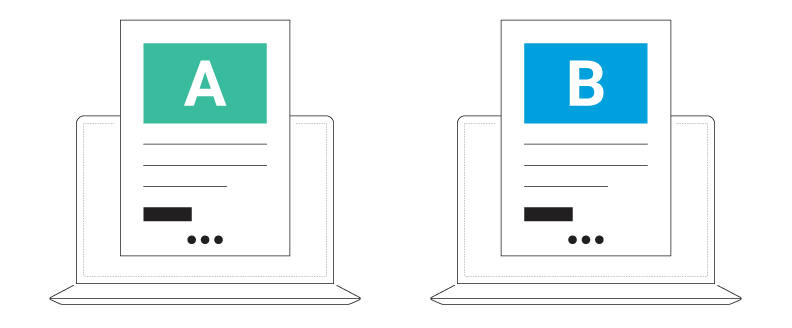In today’s oversaturated market, understanding your customer is more important than ever. Thankfully there are numerous ways to do this including customer analytics and even tools that can record customer behavior.
Yet, 39% of companies don’t regularly ask customers for feedback about their interactions.
And only 41% of marketing executives use customer engagement data to steer their marketing strategy.
But it turns out, this isn’t for lack of wanting to. Rather, it’s a lack of understanding HOW to.
However, the importance of knowing your customer can’t be overstated. So, why does a business need to understand customer needs?
Whether you’re trying to improve a customer’s experience or increase your earned revenue, understanding your customer better than they know themselves is key.
Below, we outline eleven ways to understand your customers better. From experienced marketers to beginners, there is something below that everyone can integrate into their business.
1. Ask for Feedback
Have you ever noticed how many companies are asking you to review them on sites like Google and Facebook?
Reviews from your customers helps you with understanding your market. Not only do they provide powerful social proof regarding your products or services, they’re also often glaringly honest. People aren’t afraid to share what they REALLY think from behind a keyboard.
The good news is that when you are open to them, customer reviews and feedback can show you where you’re doing good work versus where you can stand to improve.
Make it easy for customers to leave a review, such as adding a link on your homepage. You can entice even more feedback when you offer something in exchange for a review, such as a chance to win a gift card.
2. Follow Your Customer Journey

When it comes to understanding your customer there is perhaps no easier way to determine what works (and what doesn’t) about your current process than going through it yourself.
Integrate the customer journey into things like new employee orientation so you’re always getting fresh insights. Or ask trusted friends or family members to walk through the customer journey for you.
Allow them to follow each touchpoint, procedure, and transactional process just as a real customer would. Encourage them to use the product or service themselves and ask for feedback. And then ask for feedback, like:
- Did branding feel consistent?
- Does copy in any emails that are sent flow?
- Do links work?
- Was it easy or difficult to get started with the product/service?
When you gather these types of insights regularly, you will gain a consistent understanding of whether or not your customer journey works as it should.
3. Utilize Social Media
When it comes to understanding your market, social media is a great place to observe!
While you might think that such platforms are only for posting, there are actually outstanding opportunities to listen as well. Use social media to determine who your followers are and where they’re located in the world.
Watch what posts they engage with through liking or sharing and which ones they ignore.
Keep track of questions frequently asked through private messenger or the type of feedback being consistently left in reviews.
When you use social media to actively monitor your client base, you gain valuable insights and understanding your customer is made easy.
4. Send a Survey
If the importance of knowing your customer can’t be overstated, then neither can the importance of sending them a survey. Providing powerful customer insights, a survey can generate feedback regarding everything from customer service to product feedback.
That said, before you distribute a survey spend some time reviewing the S.M.A.R.T. goals of your business. As a refresher, S.M.A.R.T. goals are:
- Specific: What do you want to accomplish?
- Measurable: How will you know you accomplished a goal?
- Attainable: But not too easy!
- Realistic: Don’t go for pie in the sky.
- Timed: Give yourself a timeline to reach your goals.
What qualitative or quantitative information that you receive from a survey could help you determine whether or not you are moving toward your goals?
Be sure to design your survey around those measurements. Combine qualitative and quantitative questions for more thorough insights into understanding your customer.
5. Listen to complaints

No business owner wants to hear what they’re doing WRONG. After all, you put a lot of time and effort into doing RIGHT by your customers.
But ultimately, someone, somewhere will have a less than stellar experience. If you’re fortunate, they’ll actually tell you about it— the average business only hears from 4% of its dissatisfied customers!
Yet the importance of knowing your customer and what they think of you—good and bad—can go a long way in understanding them better.
Really tuning in to customer complaints will give you a greater understanding of who they are and what needs they have. And responding well to them is a great opportunity to enhance the overall customer experience.
6. Update Buyer Personas
You know the one. Your Buyer Persona or Avatar is the “ideal customer” that you originally created as you built your business. They have a name, a marital status, a birthday, a job, likes, dislikes, and pain points.
While a good starter, most businesses outgrow their original persona. Or, at the very least, a business expands upon him/her.
In today’s market you can have two, three, four, or more types of customers. While they may have some similarities, it’s important to really take time to study the differences. In doing so, you can communicate with different segments of customers in different ways, thus allowing for more personalization.
7. Analyze your KPIs
Your Key Performance Indicators which you established alongside your S.M.A.R.T. goals.
KPIs are quantifiable measurements of performance over time that tell you whether or not you are moving toward (or away from) a specific business objective.
Some examples of KPIs include:
- Customer Acquisition Cost
- Cost Per Lead
- Revenue Growth
- Customer Satisfaction Rating
- Customer Lifetime Value
Measuring your KPIs weekly or monthly will help you track whether or not you’re making progress toward your sales and marketing goals. They will also give you eye-opening customer insights which will help you improve the overall experience of your customer.
8. Rely on Keywords
Do you know how customers or potential customers are finding you online? A lot of business owners don’t take time to study what customers type into a search bar. But you should! That’s because understanding your customer certainly ties back to how they find you to begin with!
Using a keyword research tool, discover what types of searches related to your product/service are popular—and which ones aren’t.
Or try typing your search into a search bar and see what populates before you can complete your query. Incorporate related search phrases into your copy to help draw in new organic customers.
9. Talk to Sales Associates
You can improve the experience of your customers with something as simple as daily, weekly, or monthly team meetings! That’s because anyone who has direct contact with your customer—from sales associates to customer happiness reps—like has an understanding of what your clients need.
Taking time to listen to what that feedback is will help you with better understanding your market.
10. Use A/B Testing

What you think your customers will like versus what they actually like may be two different things. This is where a/b testing comes in!
A/B testing is essentially comparing two versions of something and determining which version received better results. For instance, you could compare two subject lines against each other to see which one generates more opens.
The more a/b testing you perform with your marketing for your small or medium-sized business, the better you will come to understand what encourages a response from customers versus what falls flat.
11. Watch Your Competition
You should have done a competitive analysis before you even started your business. That said, there’s nothing wrong with performing one regularly throughout the lifetime of your business.
Knowing who your competition is, how they communicate with customers, and why customers might be attracted to their brand will give you a deep understanding of your customer.
Sign up for competitor’s newsletters, read their blog, follow them on social media, click on their ads and view their website. Anything you can do to glean insights from your competition will help you with better understanding your customer.
If at the beginning of this blog you asked, “why does a business need to understand customer needs” we hope we’ve given you some helpful insights into why it’s important. And better still, we hope we’ve offered you some valuable ideas as to how you can better understand your customers moving forward so you can see success with your sales and marketing goals!







